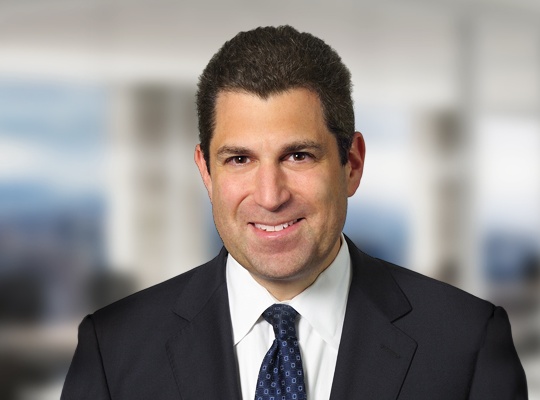NewsFlash: "Actual" Actually Means Actual - U.S. Supreme Court Rules in Sulyma on ERISA's Statute of Limitations
Under Section 413(2) of the Employee Retirement Income Security Act of 1974 (“ERISA”), ERISA’s three-year statute of limitations for fiduciary breaches and certain other violations starts to run when “the plaintiff had actual knowledge of the breach or violation.” The U.S. Supreme Court, on February 26, 2020, ruled in Intel Corporation Investment Policy Committee v. Sulyma1 that the three-year statute of limitations does not start to run even where all relevant information had been disclosed, if the plan participant had not in fact been actually aware of such information. While the Court’s decision could cause the three-year statute of limitations to remain open in a number of cases, it is worthy of note that ERISA has a separate six-year statute of limitations that may bar action to ERISA claims. This separate six-year statute of limitations does not have an “actual” knowledge requirement. We have previously discussed Sulyma while it was still pending in a previous OnPoint.
Under ERISA, whether a plaintiff alleging a fiduciary breach or other ERISA violation has as few as three years to file suit depends on whether and when a plaintiff is deemed to have “actual knowledge” of the alleged breach. The Sulyma case arose out of a putative class action brought against a plan sponsor alleging fiduciary violations under ERISA. According to the plaintiff, the plan had over time increased its allocations to alternative investments, which allegedly came “at the cost of higher fees and lower performance during periods of strong returns in the equity market” and lagging performance “compared to index funds and comparable portfolios.” The defendants, however, argued that plaintiff’s suit was time barred under Section 413(2) of ERISA because the strategy in question had been appropriately disclosed to the plaintiff more than three years prior to the commencement of the action. The plaintiff, however, claimed that he had not been aware of this information at the time and that, accordingly, he should not be barred from bringing the case.
The plan asserted that the disclosure of all relevant information relating to the alleged breach, in conjunction with plaintiff’s having had reasonable access to such information at the time of disclosure, gave the plaintiff “constructive knowledge” sufficient to satisfy ERISA’s “actual knowledge” requirement and thus trigger the three-year statute of limitations. The District Court for the Northern District of California had ruled in favor of the plan and dismissed the case as time barred, while the Court of Appeals for the Ninth Circuit reversed and remanded, concluding that the existence of the disclosures was insufficient, by itself, to establish the requisite “actual knowledge.” In granting certiorari, the U.S. Supreme Court sought to address a circuit split on this question.2
The Court unanimously rejected the plan’s “constructive knowledge” interpretation of Section 413(2), concluding that evidence of disclosure was itself insufficient to demonstrate that plaintiff had “actual knowledge” of the information contained in such disclosure. According to the Court, “to have ‘actual knowledge’ of a piece of information, one must in fact be aware of it” and, “as presently written, therefore, [Section 413(2)] requires more than evidence of disclosure alone. . . . [T]he plaintiff must in fact have become aware of that information.”
Despite the holding of Sulyma, which generally favored the plaintiff, there was some discussion favorable to defendants. In particular, the Court expressly confirmed that “[n]othing in this opinion forecloses any of the ‘usual ways’ to prove actual knowledge at any stage in the litigation [citation omitted],” that “actual knowledge” can be proved through inference from circumstantial evidence, and that defendants will continue to be able to assert that evidence of “willful blindness” supports a finding of “actual knowledge.” The Court was also clear that, if a plaintiff’s denial of knowledge is blatantly contradicted by the record, a trial court should not adopt that version of the facts when deciding whether to grant summary judgment.
In addition, as indicated above, where the three-year statute of limitations remain open because of a lack of the plaintiff’s “actual knowledge,’ ERISA’s six-year statute of limitations would still potentially be available. In this regard, Section 413(1) of ERISA prohibits plaintiffs from filing suit more than “six years after (A) the date of the last action which constituted a part of the breach or violation, or (B) in the case of an omission the latest date on which the fiduciary could have cured the breach or violation.” Thus, the six-year statute of limitations does not have an “actual knowledge” component and is still potentially available even where a plaintiff did not have the “actual knowledge” contemplated by Section 413(1).
In conclusion, while the Sulyma decision is likely not to be regarded favorably by plan sponsors, fiduciaries and the like, the Court did indicate that “actual knowledge” may not always mean "actual” knowledge in the literal or legal sense. And even when a three-year statute of limitations does not apply, plan sponsors, fiduciaries and other defendants should be mindful that the six-year statute of limitations may otherwise be applicable.
If you would like to discuss the effect of Sulyma on ERISA litigation, or any other aspect of ERISA litigation, please contact any of the Dechert lawyers listed below or any Dechert lawyer with whom you regularly work.
Footnotes
1) No. 18-1116 (Feb. 26, 2020).
2) In Brown v. Owens Corning Investment Review Committee, 622 F.3d 563, 571 (6th Cir. 2010), the Sixth Circuit held that constructive knowledge is sufficient to trigger the statute of limitations because, “[w]hen a plan participant is given specific instructions on how to access plan documents, their failure to read the documents will not shield them from having actual knowledge of the documents’ terms.”



